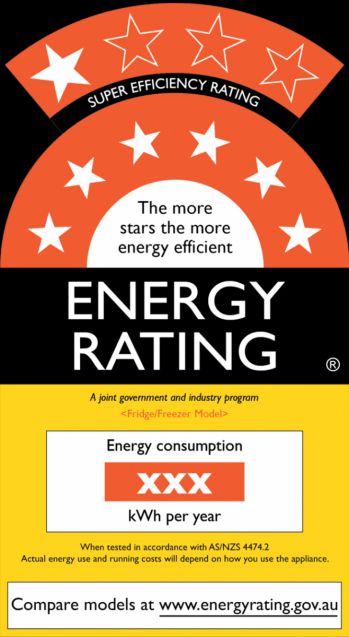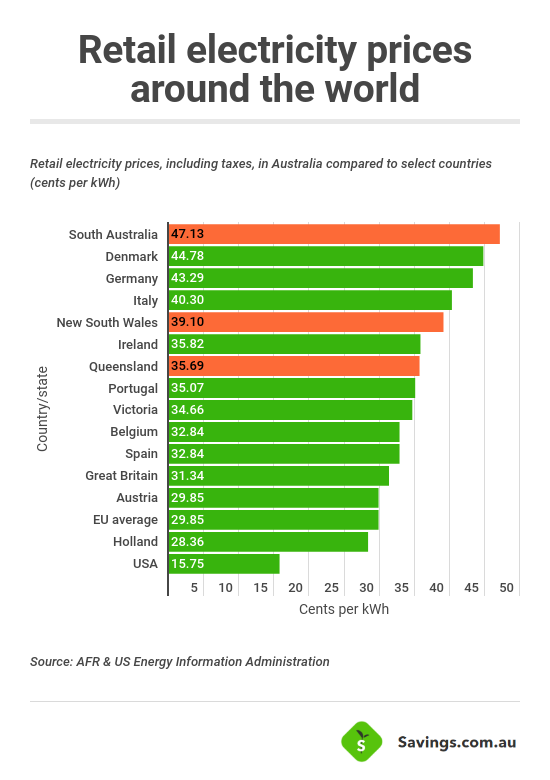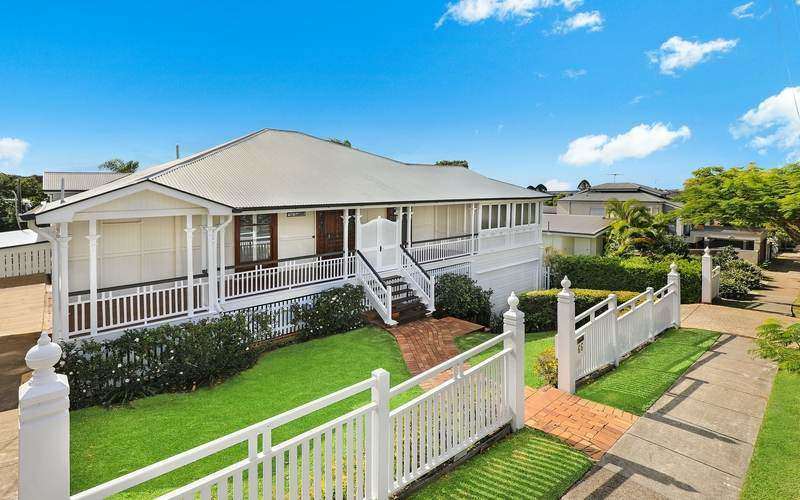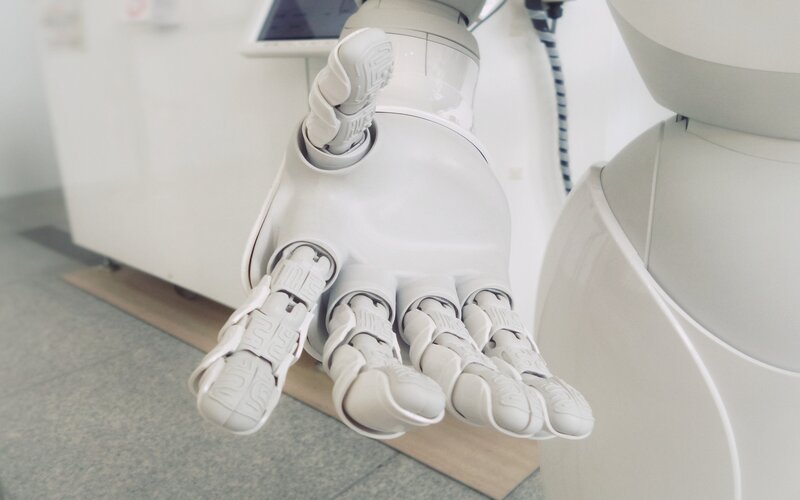What is energy efficiency?
Energy efficiency essentially refers to using a smaller amount of energy to obtain the same or even greater output. For example, an energy-efficient lightbulb might still light up your room but could use as much as 80% less energy than a standard light bulb. It’s different from energy conservation, which is where you simply don’t use something (like a light switch) to save on energy costs.
Energy-efficient products can cost a bit more money upfront, but over the long-term can save much more in ongoing costs, as they could help you use less energy to power the same basic household products. We’ll mention some of the ways you can be both more energy-efficient and better at energy conservation in this article.
How to calculate energy-efficiency?
Although we don’t go into complex calculations on this page, here’s a ‘simple way’ to work out the energy-efficiency of a product:
Efficiency = energy output/energy input x 100
The conversion efficiency formula above for heating, lighting and household appliances is essential for calculating the energy efficiency of houses - the higher it is, the more energy-efficient the product.
To work out how energy efficient a product is at first glance, without doing complicated calculations, simply look for the energy star rating, which you can see an example of below.
Power ratings of appliances
Most appliances also come with energy-efficient star ratings. A high star rating usually means the appliance is more efficient, so it’s worth looking at ones with a high rating.

Average electricity bill in Australia
According to Ergon Energy, Australians spend about $381 per quarter, or about $1,500 per year, on energy. Most of this is spent on air conditioning and heating (40%) water (21%) and powering appliances (21%). This figure also varies by state. Sustainability Victoria, for example, reports that the average Victorian household spends $2,800 on electricity and gas each year, with 32% dedicated to heating. Environment Victoria states the average household could slash its energy bills by 40% by becoming energy efficient.

Here’s what the average household’s energy bill is spent on.
Australian households pay some of the highest electricity prices in the world. According to a study from the US Energy Information Administration, South Australians pay the most at $47.13 cents per kilowatt (c/kWh), with New South Wales (39.10 c/kWh) and Queensland (35.69 c/kWh) not far behind. This puts South Australia ahead of:
- Denmark (44.78)
- Germany (43.29)
- Great Britain (31.34)
- The EU average (29.85)
- The US (15.75)

Our energy bills are apparently so high that former Prime Minister Malcolm Turnbull summoned energy company chief executives to Canberra for a ‘please explain’. But why leave your energy bill in their hands? Without taking proactive steps to help yourself, chances are you’ll be paying more than you should on your energy.
Having an energy-efficient home can shave hundreds off your final energy bill each year, but many of us aren’t getting the message. According to an analysis by The Conversation, the average household is currently achieving a 6/10 energy-efficient star rating, which is below the optimal 7.5 stars.
There are many steps you can take to lower your home energy bill – here are some of the biggest ones. Some of the dollar figures shown are just estimates based on various sources, so this isn’t a guarantee. But it should give you an idea of the kind of savings you can make.
Ways to save money on heating and cooling
The big energy thieves in your home are heating and cooling devices, like air conditioners or portable heaters. They can account for more than a third of your total energy bill, particularly if you live in a particularly hot or cold part of the country.
Here are some of the top things to keep in mind when looking to save money on these devices:
- Each airconditioner degree over 20°C uses 10% more energy; for cooling, each degree under 24°C uses 5% more energy
- Using fans instead of air conditioning can save between $40 and $200 a year
- Only using air-con when temperatures reach over 30°C can save $50-$340 a year
- Using an electric throw rug instead of a portable heater can save between $70 and $280 a year
- Reverse cycle air conditioners are 300-600% more energy-efficient, meaning they can take one unit of electrical energy and turn it into three to six times as much heating or cooling energy.
And here are some less obvious ways to save on heating and cooling that don’t always have a dollar figure attached to them:
- Replace the filters on appliances: full filters can force air conditioners and heaters to work harder, lowering their efficiency
- Let the sun do its thing: the sun is pretty hot. Open those blinds and let some of its heat get trapped in your house on a sunny day – on a murky day, shut them.
- Get some carpets: hard floors retain the cold more than carpets do, so filling your floors with fuzzy carpets will help with heat retention.
- Close the doors and windows if you do have the air conditioner on
- Consider painting in cooler colours: dark colours (like black) attract heat, so if you’ve got a free weekend consider giving your walls a paint job.
- Shade the house: grow some plants of trees in your yard to protect yourself from the sun’s rays.
| Energy saving tip | ACT | NSW | QLD | SA | VIC |
|---|---|---|---|---|---|
| Use a heated electric throw instead of a portable heater | $240 | $116 | $69 | $286 | $214 |
| Use your air conditioner for an hour less on hot days. | $38 | $38 | $93 | $81 | $31 |
| Use your ceiling fans instead of air con on days with maximum temperatures between 28℃ and 30℃. | $55 | $87 | $202 | $83 | $48 |
| Use your air conditioner only with the temperature goes over 30℃. | $67 | $184 | $340 | $175 | $51 |
| Maximum total savings | $400 | $425 | $704 | $625 | $344 |
Source: Origin Energy
Hot water energy saving tips
Some of these tips for saving money on water might seem small, but together they can lead to some nice savings year-to-year:
- Take shorter showers: taking a four-minute shower every day instead of an eight-minute one can save between $60 and $650 a year on water bills
- Showers over baths! A bath can use up to 100 litres, while a four-minute shower uses less than 30
- Use a more efficient showerhead: using a 3-star AAA-rated or higher showerhead can lead to savings of up to $700 a year due to a more efficient water flow
- Lower the temperature on your showers or baths: most people don’t like cold showers, but scalding ones cost extra. The optimum temperature is about 50-60°C
- Wash clothes using cold water: there’s not really a huge difference between washing clothes in warm or cold water, but you can save up to $80 a year doing so
- Fix leaking taps: a leak of one drip per second can cost up to $25 extra per year
- Switch off the hot water heater if you’re away: doing this for two weeks a year can save up to $30
Top tips to save money on appliances
Whether it’s in the kitchen, the bathroom, the living room or the laundry, there are plenty of ways to save on your electricity bill. Too many, in fact, to list them all here. But we have listed a handful of the key ones:
- Each fridge degree colder uses 5% more energy: set your fridge to about 4-5℃ and your freezer to -15℃
- Use your microwave over the stove: microwaves use 80% less energy than electric stoves
- On electric stoves: they’re generally less energy efficient than gas stoves
- When using the stove, keep a lid on pots and pans: this can save up to 70% on their energy usage
- Avoid using dryers: hanging out clothes once a week instead of drying can save between $40 and $80 a year
- Switch off your devices when you’re not using them: turning off TVs and game consoles can save up to $45 a year, computers up to $55 a year
- Only use the dishwasher when it’s full: it will use the same amount of water each time, so why waste it on a half-full dishwasher. Also, use the eco-setting if it has one.
- Use smart power boards: these boards can let you put numerous different appliances onto standby at once, preventing them from draining power all day.
As with air conditioners, appliances like fridges and dryers work best when they’re in good condition. So make sure you clean them regularly (whether that’s by clearing the filter in your dryer or throwing out off food from a fridge) to enhance their performance.
How to save on lighting
Here are some tried and tested ways to lower the lighting component of your electric bill:
- Use LED lights: By replacing 10 halogen light bulbs with LEDs, an average household can expect to save around $65 per year
- Use lamps when you can: switching on lamps instead of overhead lights save between $50 and $140 a year
- Avoid turning the lights on during the day: the sun is the solar system’s biggest and most powerful lightbulb, and best of all, it’s free!
Also, it goes without saying, but turn them off when you’re not in the room!
Use solar panels to save energy
Installing solar panels in your home can lead to long-term savings on your electricity bill – as long as you stick around enough to recoup the installation fee. After the government rebate for solar panels, a 250W solar panel can cost anywhere from $2,500 to $12,000 to install depending on the size, according to Solar Quotes. Solar Choice puts the average price across Australian capital cities for a 5kW system at $5,100.
Solar panels can take a few years before they recoup this installation cost for you, but the savings after that could well be worth it – Australia is an extremely sunny nation, and the power a well-placed solar grid can generate can lead to tens of thousands in savings over 20-30 years, which is the life of the average home loan. As well as being extremely energy-efficient, solar panels can also add to your property’s market value when the time comes to sell.
| System size | Solar daily output | Cost of power | Potential savers (per year) |
|---|---|---|---|
| 3kW | 12 kWh | 30 cents | $1314 |
| 5kW | 20 kWh | 30 cents | $2190 |
| 10kW | 40 kWh | 30 cents | $4380 |
An example of the potential savings from solar panels. Source: solaray.com.au
Solar hot water can also supply up to 90% of your hot water – massive savings on your water bill.
Energy-saving scheme
There are a number of State Government schemes out there designed to help energy consumers save money. One such scheme is the New South Wales Energy Efficiency Program (EES), which aims to create a financial incentive to homes and businesses to reduce their energy consumption by encouraging energy-saving activities and purchases.
Other state’s schemes include the Queensland Energy Efficiency Program, the Victorian Solar Homes Scheme and the South Australian Home Battery Scheme.
Don’t pay a loyalty tax on your energy bill
The banking sector might have its big four, but the energy market is currently dominated by ‘the big three’ – Origin Energy, AGL Energy and EnergyAustralia, who occupy 65% of the market share. This number used to be higher, but a number of ‘tier two’ operators like Momentum Energy and Powershop have entered the scene lately, leading to increased price competition.
As mentioned before, electricity and gas prices, in particular, have risen significantly in recent years. Electricity is the bigger culprit – between 2015 and 2017, prices rose by nearly 100%. Retailers have previously been accused of practices like price gouging and unfair billing practices, and current customers have long been getting stuck with higher prices, while newer customers get cheaper deals. This practice is known as a ‘loyalty tax’.
As of July 2019, this practice has been abolished, but this doesn’t mean you can’t still pay a variation of a loyalty tax. By staying with an existing provider you could still pay more than you would with other energy retailers who offer cheaper plans.
To help you find a new plan, a new ‘Default Market Offer’ (DMO) has been introduced via new regulations. This acts as a benchmark to compare prices to help customers who want to switch, and there’s generally a greater range of prices available outside the big retailers from small companies. And remember: by threatening to switch, your current provider might choose to match or even beat the price of your new retailer, which can be more convenient than going through the switching process.
Utilise pay-on-time discounts
There are a number of discounts retailers offer which can help lower the cost of your energy bill. These include:
- Pay on time discounts, which can reduce your total bill by as much as 25% if you pay before the due date
- Direct debit discounts: not making the retailer send a paper bill can save you a few dollars a month
- Bundling discounts: having both gas and electricity provided by the same retailer can also lead to some nice discounts (varies between providers)
Find an energy-efficient home loan
Although they occupy only a tiny fraction of the home loan market, there are products out there from select lenders that reward customers buying energy-efficient homes or making environmentally friendly renovations in the form of discounted interest rates and reduced fees.
For example, one of the largest banks to offer a green home loan is Bendigo Bank, which offers a maximum discount of 110 basis points to its residential variable rate as well as no monthly service fee, as long as the loan meets certain conditions:
- The loan must be owner-occupied
- The building or renovation must comply with the minimum environmental standard required by your state, or at least two items specified by Bendigo Bank are being renovated or installed
This loan is valid for amounts up to $350,000.
Another form of energy-efficient home loan is a rebate given by the lender. For example, Commonwealth Bank offers customers $500 cashback through its Green Mortgage Initiative if they have certified solar panels installed.
When getting a ‘green’ home loan, you just need to weigh up the actual cost of the loan and if the savings are worth it. For example, that Green Bendigo Bank loan has an interest rate of 4.18% p.a. at the time of writing (July 2019), which is much higher than its Basic Home Loan rate. So, in this case, it would still be cheaper to go with its non-green product. In the case of CommBank, you would likely save more than $500 by refinancing to a lower home loan interest rate instead.
These loans still tend to be much cheaper than the lowest personal loan rate though, so they can be more useful for renovations.
Savings.com.au’s two cents
Energy costs are one of the biggest household costs there is. According to a 2017 ACCC report, household electricity prices rose by 63% from one decade prior.
If you’ve never considered any of the tips mentioned above, then the chances are high you’re paying more than you need to for your energy bills. Since we’re all about savings here, this is a good place to cut down on some unnecessary expenses.
The Australian Government has an Energy Made website with a usage calculator. This calculator can show you the average electricity and gas usage in your area, while other sites have water usage calculators. If your usage is above the average in your area, or just seems too high for your liking, this is a sign to make some changes.
We don’t pretend to be experts on energy here – we’re more about financial products – so it might be worth consulting an energy company or expert for any questions you have.

Ready, Set, Buy!
Learn everything you need to know about buying property – from choosing the right property and home loan, to the purchasing process, tips to save money and more!
With bonus Q&A sheet and Crossword!



 Brooke Cooper
Brooke Cooper

 Harry O'Sullivan
Harry O'Sullivan
 William Jolly
William Jolly
 Emma Duffy
Emma Duffy

